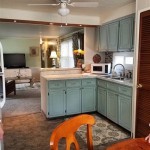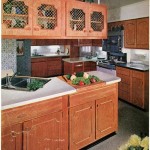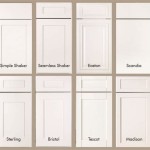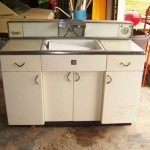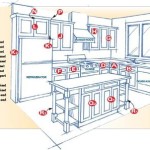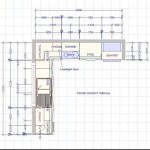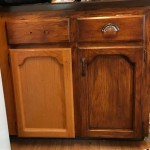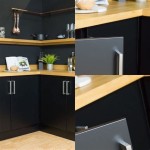Wood Kitchen Cabinets: A Comprehensive Overview
Wood kitchen cabinets represent a cornerstone of kitchen design, prized for their aesthetic appeal, durability, and versatility. The selection of wood cabinets involves consideration of various factors, including wood species, construction methods, finishes, and style preferences. Understanding these elements allows homeowners to make informed decisions that align with their budget, functional needs, and desired aesthetic.
Wood Species Selection
The choice of wood species significantly impacts the appearance, durability, and cost of kitchen cabinets. Different wood species exhibit unique grain patterns, colors, and hardness levels, influencing the overall aesthetic and functional suitability for a kitchen environment. Common wood species used in cabinet construction include maple, oak, cherry, birch, and hickory. Each species possesses distinct characteristics that warrant careful consideration.
Maple: Known for its smooth, closed grain and light color, maple offers a clean and contemporary look. It accepts stains well, allowing for a wide range of finishes. Maple is also a relatively hard wood, providing good resistance to dents and scratches, making it a durable option for kitchen cabinets. Its lighter tone is particularly well-suited for kitchens seeking a bright and airy ambiance.
Oak: Oak is a classic choice for kitchen cabinets, recognized for its prominent grain pattern and robust durability. Red oak features a reddish hue, while white oak tends to be lighter and more neutral. Oak's inherent strength and resistance to wear make it a long-lasting option. Its pronounced grain pattern can complement traditional and rustic kitchen styles.
Cherry: Cherry wood is prized for its rich, warm color and smooth grain. It darkens naturally over time, developing a beautiful patina. Cherry cabinets exude elegance and sophistication, often favored in more formal kitchen settings. While softer than maple or oak, cherry is still a durable wood when properly finished and maintained.
Birch: Birch is a versatile wood species with a fine grain and light color, similar to maple. It is a cost-effective alternative to maple while still offering a clean and modern aesthetic. Birch readily accepts stains and paints, allowing for customization to match various design schemes. Its uniform texture and lighter shade make it a popular choice for contemporary kitchens.
Hickory: Hickory is one of the hardest and most durable domestic wood species. It showcases a striking grain pattern and a range of colors, from light to dark brown. Hickory cabinets exude a rustic and natural charm. Due to its hardness, hickory is an excellent choice for high-traffic kitchens where durability is paramount.
Cabinet Construction Methods
The way cabinets are constructed significantly impacts their structural integrity, longevity, and overall cost. Common cabinet construction methods include framed and frameless, each offering distinct advantages and disadvantages. Understanding these construction techniques enables homeowners to choose cabinets that meet their specific requirements and budget constraints.
Framed Cabinets: Framed cabinets feature a face frame that surrounds the cabinet box. This frame adds structural support and provides a surface for attaching doors and drawers. Framed cabinets are often considered more traditional in style and offer greater adjustability in terms of door and drawer alignment. The presence of the face frame can reduce the interior space available for storage, depending on the design. Full-overlay, partial-overlay and inset doors are possible with framed cabinetry.
Frameless Cabinets: Frameless cabinets, also known as European-style cabinets, lack a face frame. The doors and drawers attach directly to the cabinet box, creating a sleek and modern aesthetic. Frameless construction maximizes interior storage space and offers a clean, streamlined look. Frameless cabinets often require more precise installation due to the absence of a face frame for adjustments.
Beyond framed and frameless construction, the materials used for the cabinet box are also crucial. Plywood is generally considered a superior material compared to particleboard or medium-density fiberboard (MDF) due to its strength, stability, and resistance to moisture. Solid wood is sometimes used for cabinet boxes, but it is typically more expensive and can be prone to warping or cracking depending on the environment. The back panel of the cabinet is also a structural component, with thicker panels offering greater stability. The joinery methods used to assemble the cabinet box, such as dovetail joints or mortise-and-tenon joints, contribute to the overall strength and durability of the cabinet.
Finishes and Styles
The finish applied to wood kitchen cabinets not only enhances their aesthetic appeal but also protects the wood from moisture, scratches, and stains. Cabinet styles range from traditional to contemporary, allowing homeowners to customize their kitchens to reflect their personal tastes and design preferences. Choosing the appropriate finish and style is essential for achieving the desired look and functionality.
Finishes: Common cabinet finishes include stains, paints, and clear coats. Stains enhance the natural wood grain and add color without completely obscuring the wood's texture. Paints provide a uniform color and can be used to create a more modern or contemporary look. Clear coats protect the wood while allowing its natural beauty to shine through. Choosing the right finish depends on the wood species, desired aesthetic, and level of durability required.
The type of finish used also affects the durability and maintenance requirements of the cabinets. Conversion varnishes and catalyzed lacquers are popular choices for kitchen cabinets due to their resistance to moisture, chemicals, and abrasion. These finishes create a hard, durable surface that is easy to clean and maintain. Water-based finishes are becoming increasingly popular due to their lower VOC (volatile organic compound) content, making them a more environmentally friendly option.
Styles: Cabinet styles encompass a wide range of designs, from traditional raised-panel doors to sleek, minimalist flat-panel doors. Traditional styles often feature ornate detailing, such as moldings, carvings, and decorative hardware. Contemporary styles emphasize clean lines, simple shapes, and minimal ornamentation. Shaker-style cabinets, characterized by their recessed panel doors and clean lines, are a popular choice for their versatility and timeless appeal.
Hardware selection is another crucial aspect of cabinet style. Knobs and pulls can significantly impact the overall aesthetic of the cabinets. Traditional kitchens often feature decorative knobs and pulls in antique brass or oil-rubbed bronze finishes, while contemporary kitchens typically incorporate sleek, minimalist hardware in stainless steel or chrome finishes. The choice of hardware should complement the cabinet style and the overall design of the kitchen.
The layout of the kitchen also influences cabinet style choices. In smaller kitchens, maximizing storage space is often a priority, leading to the selection of taller cabinets and space-saving features such as pull-out shelves and drawer organizers. In larger kitchens, homeowners may have more flexibility to experiment with different cabinet configurations and styles, creating a more custom and personalized design.
Proper maintenance and care are essential for preserving the beauty and longevity of wood kitchen cabinets. Regular cleaning with a mild soap and water solution can help prevent the buildup of dirt and grime. Avoid using abrasive cleaners or harsh chemicals, as they can damage the finish. Periodic waxing or polishing can help protect the wood and maintain its luster. Addressing any spills or water damage promptly can prevent staining or warping. Simple preventative measures can ensure that wood kitchen cabinets remain a beautiful and functional part of the home for years to come.
The environmental impact of wood kitchen cabinets is an increasingly important consideration for many homeowners. Choosing sustainably sourced wood and eco-friendly finishes can help reduce the environmental footprint of the kitchen renovation. The Forest Stewardship Council (FSC) certification ensures that wood products come from responsibly managed forests. Opting for cabinets manufactured using low-VOC materials and finishes can improve indoor air quality and minimize the release of harmful pollutants.

Best Wood Types For Kitchen Cabinets Cabinet

12 Kitchens That Wow With Wood Cabinets

The Ultimate Guide To Wood Kitchen Cabinets For Any Style
:strip_icc()/102182203-4cf08265c33b4c4e88fb21315a8fe626.jpg?strip=all)
Wood Cabinet Ideas To Consider For Your Kitchen Remodel

The Comeback Of Wood Kitchen Cabinets Farmhousehub

How To Update A Wooden Kitchen Cabinet Bodaq By Hyundai

Best Wood For Kitchen Cabinets Cabinet Materials Custom

House Home See How Warm Wood Wows In These 75 Kitchens Bathrooms

Modern Wooden Kitchen Cabinet

Wood Cabinets In The Kitchen Making A Comeback Town Country Living

